- About us
- Support the Gallery
- Venue hire
- Publications
- Research library
- Organisation chart
- Employment
- Contact us
- Make a booking
- Onsite programs
- Online programs
- School visit information
- Learning resources
- Little Darlings
- Professional learning
Billy Bean, or Beans, is memorialised only in Dempsey’s portrait and in a brief account in historian Cornelius Meadley’s 1890 compilation, Memorials of Scarborough …. Meadley observes that ‘There are very few provincial towns in England which are not possessed of some eccentric characters, who seem to pick up a precarious existence and frequently are in our midst for a number of years. Of this notable class the town of Scarborough would seem to have had more than it ordinary share …’.
He goes on to provide evidence for his proposition in a three-page catalogue of over three dozen ‘characteristic worthies’ from the early 19th century, including ‘Billy’ Donkin, the blind pieman; Willy, Mary and Martha Heslop, collectors of horse-dung and reputed witches; the extraordinarily strong and double-jointed ‘Capper Jack’; Nancy Edmond, the letter carrier; Hannah Sanders, who sold brandy snaps at the spa; and William Sutton, the town gossip. Meadley also lists some characters whose claims to fame are unspecified, but implicit in their nicknames, such as Copper-hat, Give-way Gardner, Huntsman Ralph, Tommy Argument and Billy Bacca-lad.
Billy Bean was called ‘Suet’, from his employment as a carrier of meat for the town’s butchers. In Dempsey’s picture he holds his capacious straw basket by the rim, facing outwards so that we can see the leg of lamb he is delivering. Meadley also reports that he had been aide-de-camp to the Old Scarborough Volunteers in 1800. Perhaps his appointment to that role suggests that Bean was more of a mascot than a useful militiaman. Even without Dempsey’s inscription ‘a poor lunatic’, we might infer some degree of mental disability from the expectant–submissive stance, tousled hair, and a facial expression that is at once squinting, pouting and blank.
His singular personal appearance is matched by that of his ragged clothes. Although his suit is a sober black, the waistcoat has brown facing and a couple of mismatched buttons. Moreover, his buttonholes and most of his outer seams — in waistcoat, topcoat and breeches, and even on the crown and brim of his hat — are roughly stitched in coarse, white thread — butcher’s twine perhaps? — giving him a spotty, suety profile.
Apparently Bean was the subject of merciless teasing from boys in the Scarborough streets in attempts to ignite his temper. And not without some success, it would seem. Poor Billy took to carrying a large stone or half-brick in his coat and, when he got worked up, would chase the brats down the road and throw the rock at them.
That is all we know, though local parish records contain another Mr Bean of the right age. It is possible that ‘Billy’ is just an alliterative nickname, and that he is in fact the John Bean, labourer, who died in the Scarborough Workhouse on 18 March 1865, aged 84.
Collection: Tasmanian Museum and Art Gallery, presented by C. Docker, 1956
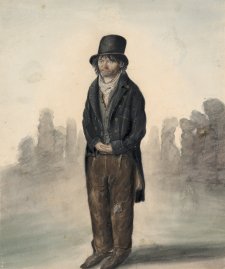
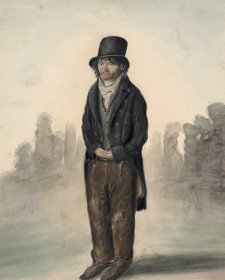
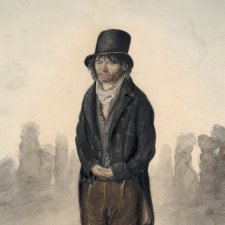
30 June 2017
Those of you who are active in social media circles may be aware that through the past week I have unleashed a blitz on Facebook and Instagram in connection with our new winter exhibition Dempsey’s People: A Folio of British Street Portraits, 1824−1844.
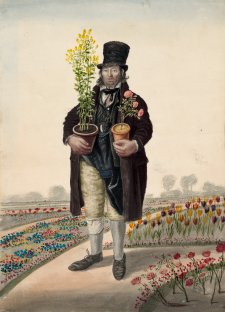
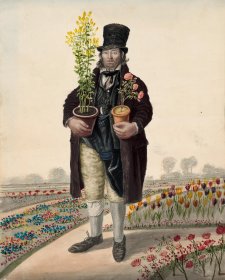
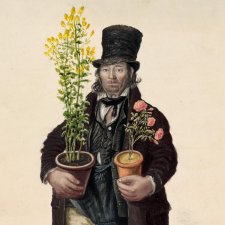
Dempsey’s people: a folio of British street portraits 1824–1844 is the first exhibition to showcase the compelling watercolour images of English street people made by the itinerant English painter John Dempsey throughout the first half of the nineteenth century.



Visit us, learn with us, support us or work with us! Here’s a range of information about planning your visit, our history and more!